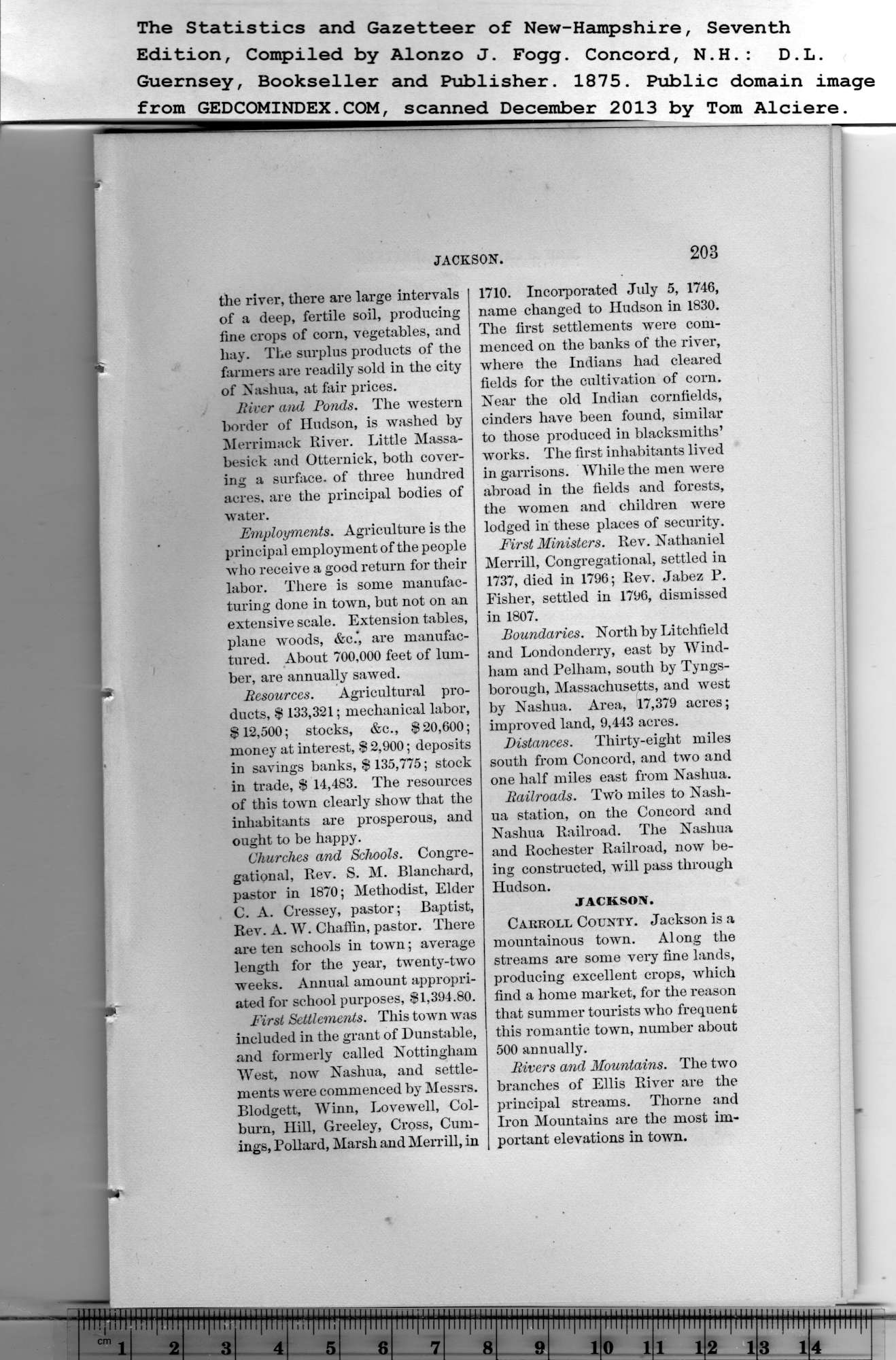|
the river, there are large intervals
of a deep, fertile soil, producing
fine crops of corn, vegetables, and
hay. The surplus products of the
farmers are readily sold in the city
of Nashua, at fair prices.
River and Ponds. The western
border of Hudson, is washed by
Merrimack River. Little Massa-
besiek and Otternick, both cover-
ing a surface, of three hundred
acres, are the principal bodies of
water.
Employments. Agriculture is the
principal employment of the people
who receive a good return for their
labor. There is some manufac-
turing done in town, but not on an
extensive scale. Extension tables,
plane woods, &c.", are manufac-
tured. About 700,000 feet of lum-
ber, are annually sawed.
Resources. Agricultural pro-
ducts, $ 133,321; mechanical labor,
$12,500; stocks, &c., $20,600;
money at interest, $ 2,900; deposits
in savings banks, $ 135,775; stock
in trade, $ 14,483. The resources
of this town clearly show that the
inhabitants are prosperous, and
ought to be happy.
Churches and Schools. Congre-
gational, Rev. S. M. Blanchard,
pastor in 1870; Methodist, Elder
C. A. Cressey, pastor; Baptist,
Rev. A. W. Chaffin, pastor. There
are ten schools in town; average
length for the year, twenty-two
weeks. Annual amount appropri-
ated for school purposes, $1,394.80. |
First Settlements. This town was
included in the grant of Dunstable,
and formerly called Nottingham
West, now Nashua, and settle-
ments were commenced by Messrs.
Blodgett, Winn, Love well, Col-
burn, Hill, Greeley, Cross, Cum-
ings, Pollard, Marsh and Merrill, in
1710. Incorporated July 5, 1746,
name changed to Hudson in 1830.
The first settlements wex-e com-
menced on the banks of the river,
where the Indians had cleared
fields for the cultivation of corn.
Near the old Indian cornfields,
cinders have been found, similar
to those produced in blacksmiths’
works. The first inhabitants lived
in garrisons. While the men were
abroad in the fields and forests,
the women and children were
lodged in these places of security.
First Ministers. Rev. Nathaniel
Merrill, Congregational, settled in
1737, died in 1796; Rev. Jabez P.
Fisher, settled in 1796, dismissed
in 1807.
Boundaries. North by Litchfield
and Londonderry, east by Wind-
ham and Pelham, south by Tyngs-
borough, Massachusetts, and west
by Nashua. Area, 17,379 acres;
improved land, 9,443 acres.
Distances. Thirty-eight miles
south from Concord, and two and
one half miles east from Nashua.
Railroads. Two miles to Nash-
ua station, on the Concord and
Nashua Railroad. The Nashua
and Rochester Railroad, now be-
ing constructed, will pass through
Hudson.
JACKSON.
Carroll County. Jackson is a
mountainous town. Along the
streams are some very fine lands,
producing excellent crops, which
find a home market, for the reason
that summer tourists who frequent
this romantic town, number about
500 annually.
Rivers and Mountains. The two
branches of Ellis River are the
principal streams. Thorne and
Iron Mountains are the most im-
portant elevations in town. |
